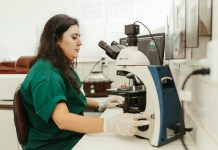
The overall 5-year relative survival rate for all cancers combined is now 68%, and there are over 16.9 million survivors in the United States.
Previous studies suggest that factors such as diet, physical activity, and obesity may affect risk for recurrence and overall survival after a cancer diagnosis.
In a new guideline from the American Cancer Society, researchers point out that engaging in regular physical activity and following a healthy diet could help cancer survivors increase their likelihood of long-term survival and reduce the odds of their cancer coming back.
For cancer patient perspective, the strategy is simple and practical.
The new guidelines for cancer survivors are an update to previous health recommendations published in 2006 and 2012.
The latest edition compiles a decade’s worth of data and evidence that identifies regular physical activity and a healthy diet as two of the most important modifiable factors in long-term health for cancer survivors.
The previous editions were focused on improvements in health and quality of life, but the latest guidelines focus on cancer recurrence and survival, and the lifestyle factors that may be linked to these outcomes.
The guidelines suggest nutritional and physical activity assessment and counseling should ideally begin as soon as possible after diagnosis and continue throughout treatment and into survivorship.
To be specific, exercise, nutrition and lifestyle could improve the chances of survival after cancer treatment.
The information presented in the guidelines is segmented by type of cancer.
This helps healthcare providers and cancer survivors inform themselves about evidence-based nutritional or physical activity recommendations for their particular type of cancer, in many cases.
The link between exercise and improved outcomes for cancer patients isn’t established for all types of cancer.
However, the guidelines do highlight that exercise leads to a lower risk of recurrence and a higher likelihood of survival for three common types of cancer—breast, prostate and colon cancer.
Exercise has the potential to lower the risk of cancer recurrence through a variety of mechanisms.
These mechanisms include stimulating the immune system to activate and target cancer cells, reducing overall inflammation in the body and reducing risks related to sex hormones.
In summary, besides life-saving medical treatments, cancer survivors could change some behaviors to gain better treatment effects. Finally, everyone has the chance to help themselves.
If you care about cancer risk, please read studies that statin drugs can do double duty on heart disease and cancer, and findings of common vitamin that is very important for cancer prevention.
For more information about cancer risk, please see recent studies about the cause of lung cancer in never smokers, and results showing that aspirin could cut cancer death by 20%.
The guideline was conducted by Cheryl L. Rock et al., and published in CA: A Cancer Journal for Clinicians.
Copyright © 2022 Knowridge Science Report. All rights reserved.



